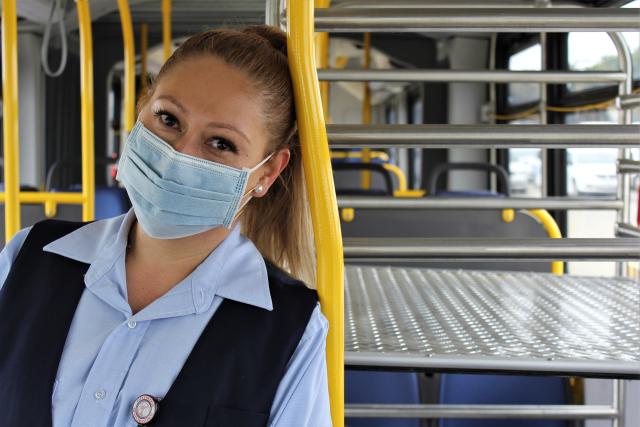A chronicle of civil servants adapting San Mateo County’s bus transit service to protect essential workers and safely serve the public amidst a global pandemic.
By Alex Eisenhart, Public Affairs Specialist | @AlexOnTransit
It’s been 100 days since San Mateo County’s first shelter-in-place order went into effect. Describing the last few months as a “wild ride” for transit operators like us would be an understatement.
SamTrans ridership has plummeted over 70%, service has been slashed by nearly half and the District is losing about $1.3 million in fare revenue each month.
We’ve seen better days.
Yet in the face of such adversity, the people of SamTrans have risen to the occasion. Even (and perhaps most importantly) in times of crisis, our public charge to provide safe, high-quality public transportation stands firm. Nothing exemplifies that commitment more than our employees’ working tirelessly to safeguard our ability to keep that promise, especially for those who rely on our buses the most.
Cleaning
Sanitizing nearly 300 buses and Redi- Wheels paratransit vehicles every day is no simple task.
Buses are normally cleaned regularly, but the latest public health guidance has taken our operation to a whole new level.
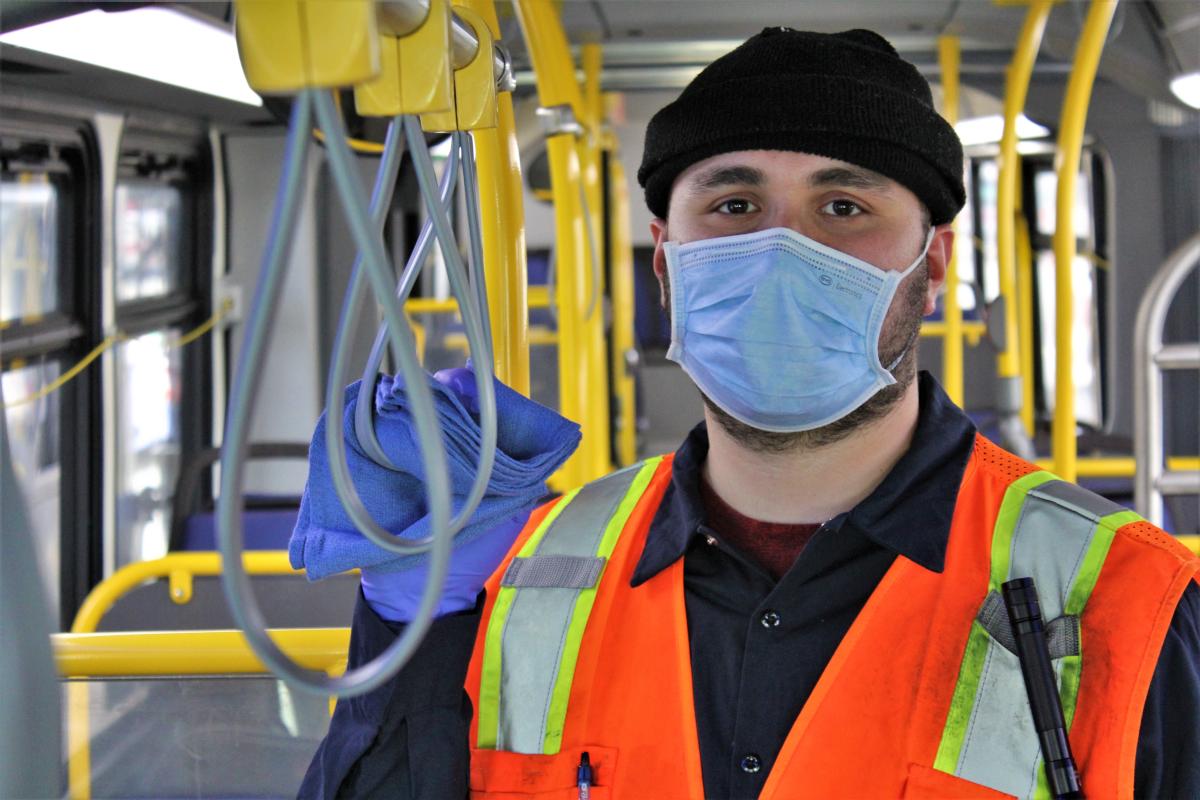
When a bus completes its service run and returns to base, it begins a new journey through an assembly line to undergo routine maintenance upkeep. Every night, Bus Maintenance Utility Workers like Jonathan (right) perform onboard cleanings, brake checks, exterior washes and much more.
26 workers. 300 buses. One shift. We’ve long had our system down to a science, but that formula changed with the need to mitigate the spread of a new virus.
Deeper cleanings, which previously would have been performed every few days, are now an intensive part of nightly fleet servicing operations. Today, when customers step onto a SamTrans bus they can rest assured that everything from hand rails and chime cords to seat cushions and stanchions have been thoroughly sanitized with hospital-grade disinfectant.
A task that used to last about 5 minutes, now takes more than twice as long. Applying that extra time to the whole fleet meant standard shifts wouldn’t cut it. We needed to invest more in our fleet servicing program to meet heightened cleaning standards. Today, staff now work extended hours every night from 3 p.m. to at least 1 a.m., all while wearing newly mandated personal protective equipment to keep them and their families safe.
Frontline Workers
There is no sugar-coating the fact that COVID-19 has made Bus Operators’ jobs a lot more difficult and stressful.
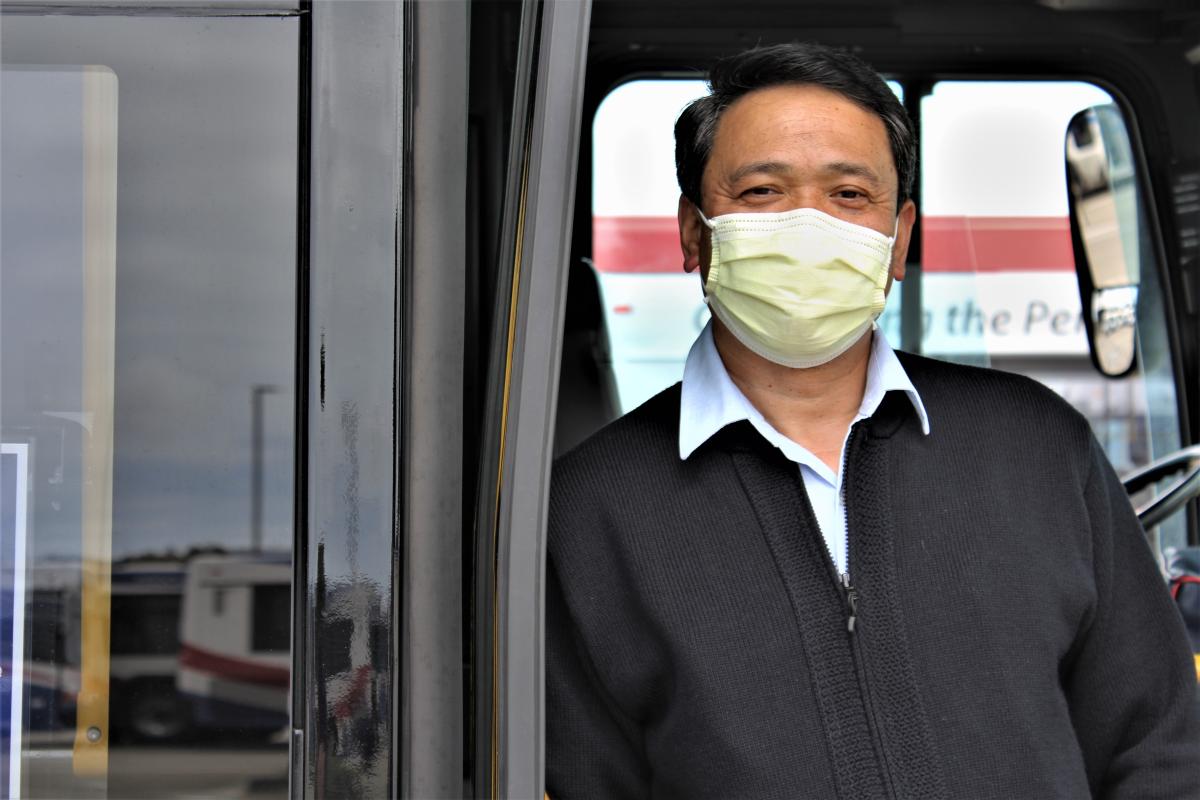
From the beginning, the pandemic presented more questions than answers about how to properly protect both transit workers and passengers. Public health guidance has continually evolved as experts learn more about the nature of this new pathogen.
SamTrans has made it a point to follow official medical and/or transportation guidance from local, state and federal officials. The understandably ever-changing nature of that guidance put the agency in a particularly precarious spot when it came to face coverings.
It’s remarkable to think that just a few months ago, CDC was recommending that masks only be worn by those experiencing symptoms of illness.
A lot has changed in 100 days.
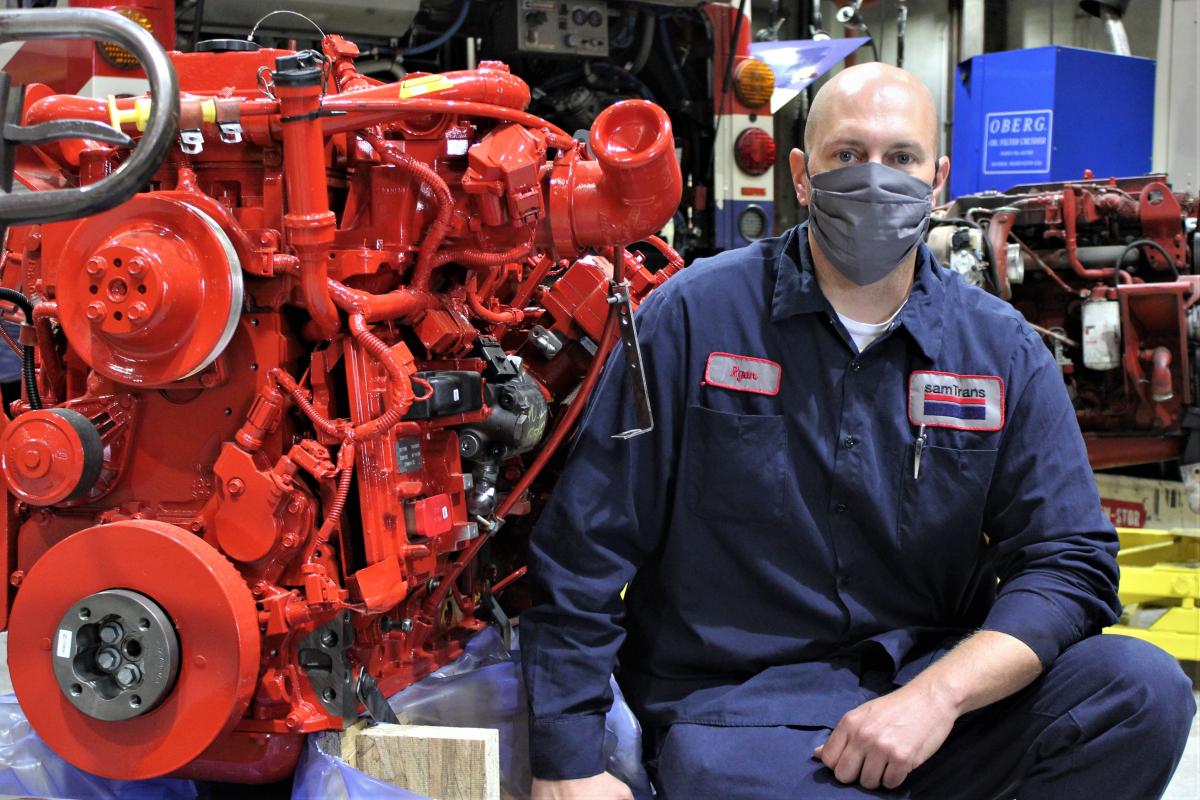
By the time a clear mandate was made on Saturday, April 4, to supply SamTrans staff with cloth face coverings, supplies were almost impossible to procure in the quantities we needed. After dozens of failed requests to local vendors, the only viable option at the time was Old Country Tailor, a small business all the way in Sacramento. Dave Harbour, SamTrans’ Director of Bus Maintenance, rushed across the state that same night to test and order 1,800 hand-made cloth face masks (shown on right) for our frontline employees. Miraculously, Old Country Tailor managed to produce and deliver the first 300 masks less than 48 hours later by the following Monday – a crucial initial supply in the early weeks of shelter-in-place. The remaining supply arrived within days.
By April 17, the Health Officer of San Mateo County ordered that, “each driver or operator of any public transportation or paratransit vehicle … must wear a face covering while driving or operating such vehicle…”
In a time of great need, SamTrans could not have managed to procure critical protective supplies for its frontline transit workers without the help and ingenuity of businesses like Old Country Tailor, to whom we are extremely grateful.
Operations
As one might imagine, Bus Operators tend to function best on routine. In addition to new employee safety protocols, necessary operational changes stemming from the pandemic have further altered much of those long-standing practices, adding stress and unfamiliarity to an already demanding job.
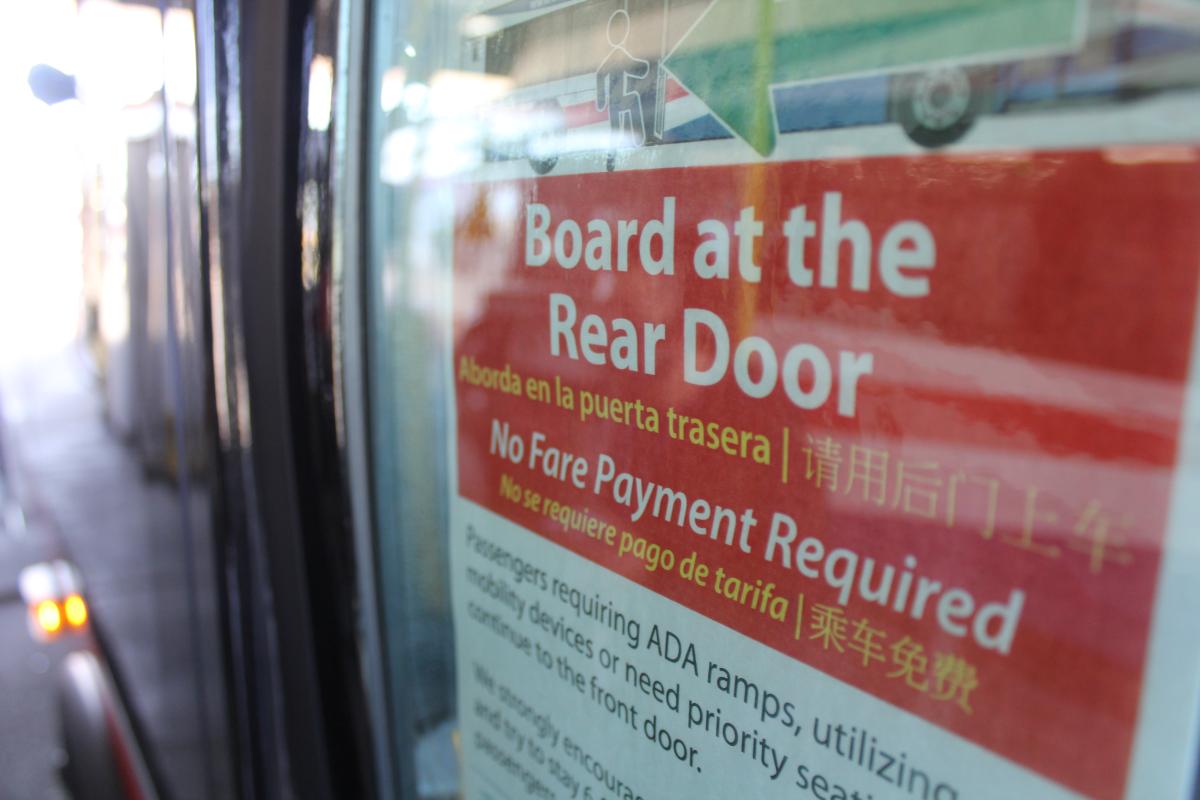
On March 24, when SamTrans implemented rear-door boarding and the suspension of onboard fare collection, much of the core operator training that has gone unchanged for 42 years went largely out the window.
For context, when a bus stops to pick up and drop off passengers, the experience for most customers is relatively simple: step onboard, pay your fare and take a seat. Bus Operators have a much longer list of tasks to complete and repeat with every stop.
Signal, check for bicyclists, slow down, pull over, align front door with accessible boarding area, kneel the bus, open doors, key in passenger boarding code, close doors, return bus to ride height, check for stragglers, left turn signal, check mirrors… to name a few.
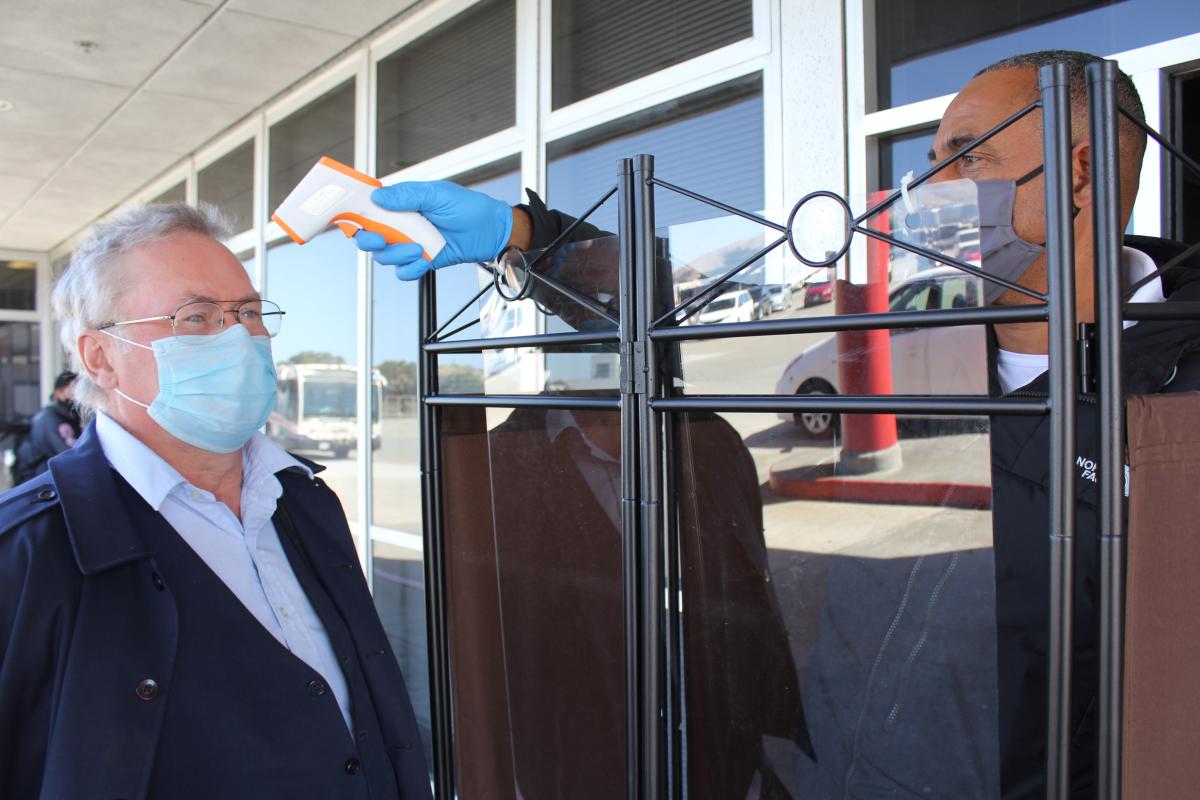
Much of that no longer applies, thus a new routine must take shape. Rather than monitor an adjacent front door, operators must now monitor a door far behind them to ensure riders board and alight safely, manually track rider count and maintain a passenger cap whenever possible in an effort to allow for physical distancing.
It may not sound that complicated, but try running that routine hundreds of times each day while wearing a mask, not touching your face, projecting 10 feet across a protective passenger barrier to answer any questions and even encountering the occasional assault from a disgruntled or mentally ill passenger.
Make no mistake – the people who drive your community’s public buses have one of the toughest, most important frontline service jobs in America right now. Even in a pandemic, SamTrans still provides nearly 10,000 passenger trips every weekday. For thousands of people in our community, SamTrans is the only means of essential travel, including commuting to work, buying food or visiting their doctor. Bus Operators have always been “essential” in the Bay Area. Perhaps a silver lining in all this is that everyone, whether they ride the bus or drive a luxury vehicle, has been given the ultimate reminder of that truth.
Planning
This is the part of our work that has been particularly turned upside down.
Prior to COVID-19, the intent behind SamTrans’ route and schedule design was to move as many people as efficiently as possible. Under those conditions, fuller buses were a good thing while empty buses were a not-so-good thing. We also had a consistent pulse on the needs and demographics of our riders (example: most riders’ annual household income is less than $50,000) based on years of surveys and customer studies.
No longer. For the first time, SamTrans' service design needed to continue accommodating passengers who are riding, while also minimizing the risk of there being too many passengers to effectively allow for physical distancing.
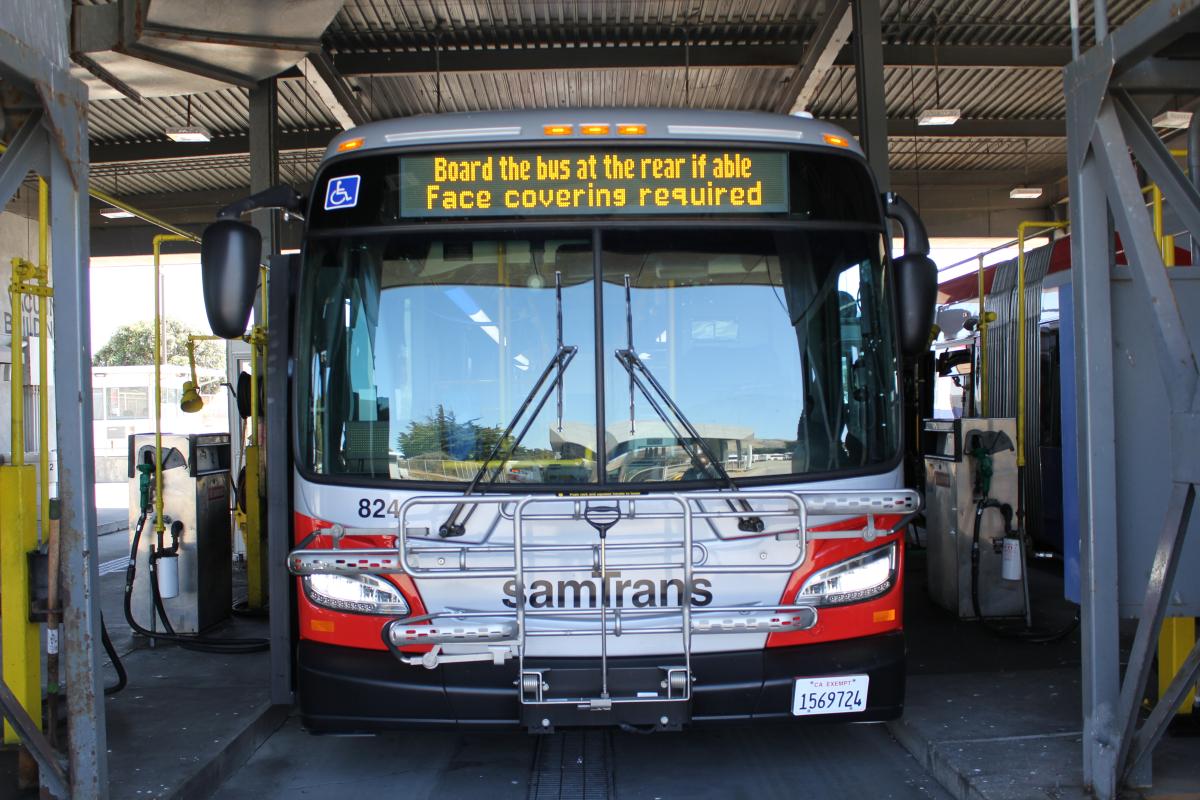
For starters, most assumptions and data collection methods were largely off the table. Relying on the information we had wasn’t going to cut it either. Nearly ¾ of our ridership was gone and we needed to understand how best to serve those who remained. In essence – we needed new data.
Onboard passenger metric systems provided some of that key information. After much arduous number crunching, our planning staff uncovered some noteworthy trends in rider demand that suggested shifts in trip purposes as a result of the pandemic. While SamTrans normally sees the most weekday crowding onboard during morning and afternoon peak commute hours, pandemic conditions brought about the opposite effect. Peaks now occur midday, which is the type of pattern we see on weekends. This discovery points to several possibilities:
- Many remaining riders using SamTrans to get to work do not have a 9 to 5 job.
- Non-standard work hours also indicate that those commuting to work on SamTrans are likely essential workers (nurses, social workers, etc.).
- Those continuing to take SamTrans under shelter-in-place conditions do so because they do not own and/or cannot afford a car.
Today, we operate under a newly designed service model specifically intended to keep our buses light, while still fulfilling essential travel needs. Schedule changes, which require significant coordination and planning, typically take about 20 weeks. SamTrans staff stepped up to the plate and finished our latest reduced service runbook in less than 5 weeks.
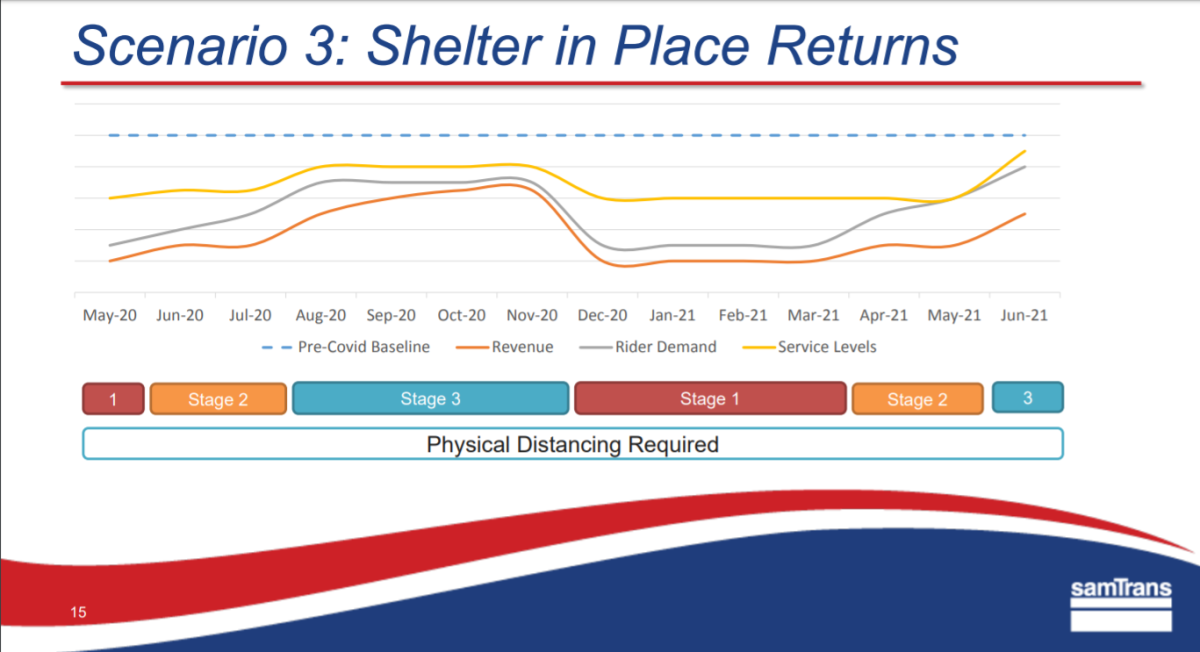
One of the universal themes of COVID-19 is uncertainty. To that end, planning and operations have made adaptation the name of the game. They continue to research and develop scenarios for various outcomes of what the future may hold in order to best serve the public. We are doing what we can to stay nimble in anticipation of sudden shifts in transportation demand throughout the region.
The Future
We are proud of the work we’ve done to keep San Mateo County moving safely, but we’ve still got a long road ahead.
Operator Barriers
One of the more immediate operational goals is to reintroduce front-door boarding procedures with the help of operator barriers similar to that of our San Francisco neighbors at MUNI. Currently, our barriers are in the final stages of design completion and material procurement. Rather than purchasing expensive back-ordered barriers from a given bus manufacturer, our incredible bus maintenance team has been creating the barriers in-house at a fraction of the cost (a savings of over $200,000). This is especially helpful considering the financial burden presented by the pandemic. Latest estimates have the barriers installed and ready to roll by August.
School-Day Only Service
This is a tricky one. School-Day Only routes normally take months to plan and prepare for, which makes the uncertainty of school schedules throughout the County difficult to accommodate. We continue to maintain regular contact with local health and education officials and hope to have more clarity for our customers soon.
Physical Distancing
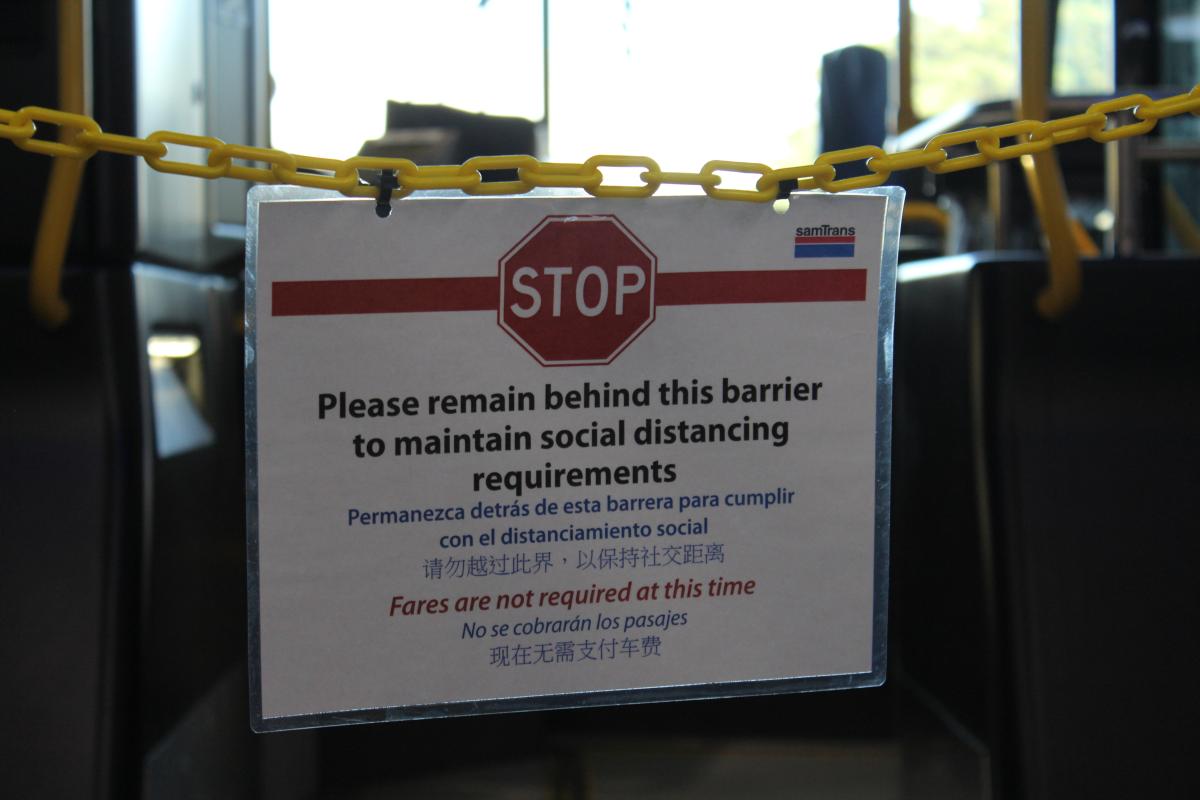
It is extremely difficult to consistently maintain and essentially impossible to enforce. The guidance presents more questions than answers, which adds stress to Bus Operators.
Let’s say, for example, a given bus now has a physical distancing capacity of 10 passengers. If there are four ADA passengers onboard and eight nurses want to board so they can get to work, a Bus Operator is suddenly expected to choose whether essential medical workers must wait for another bus. Do they ask other passengers to get off and wait, or risk bringing everyone onboard anyway so the nurses can get to work?
What would you do?
While Bus Operators are taught to expect the unexpected, these unique scenarios are not something we train for, and frankly not a position we want to put our staff in. But we stand by our pledge to abide by public health guidance as best we can and ask passengers for their patience and compassion as our staff navigate these uncharted and often inconvenient waters.
Returning Riders
Even as Bay Area businesses start to reopen, uncertainty remains a constant. We are doing what we can to prepare for a myriad of ridership scenarios tied to employer decisions, school schedules, timelines for reopening and more.
To help us in that effort, we are offering our customers, both onboard and at home, the opportunity to help inform operational decisions we will make in the coming months through our COVID-19 Customer Survey.
Final Thoughts
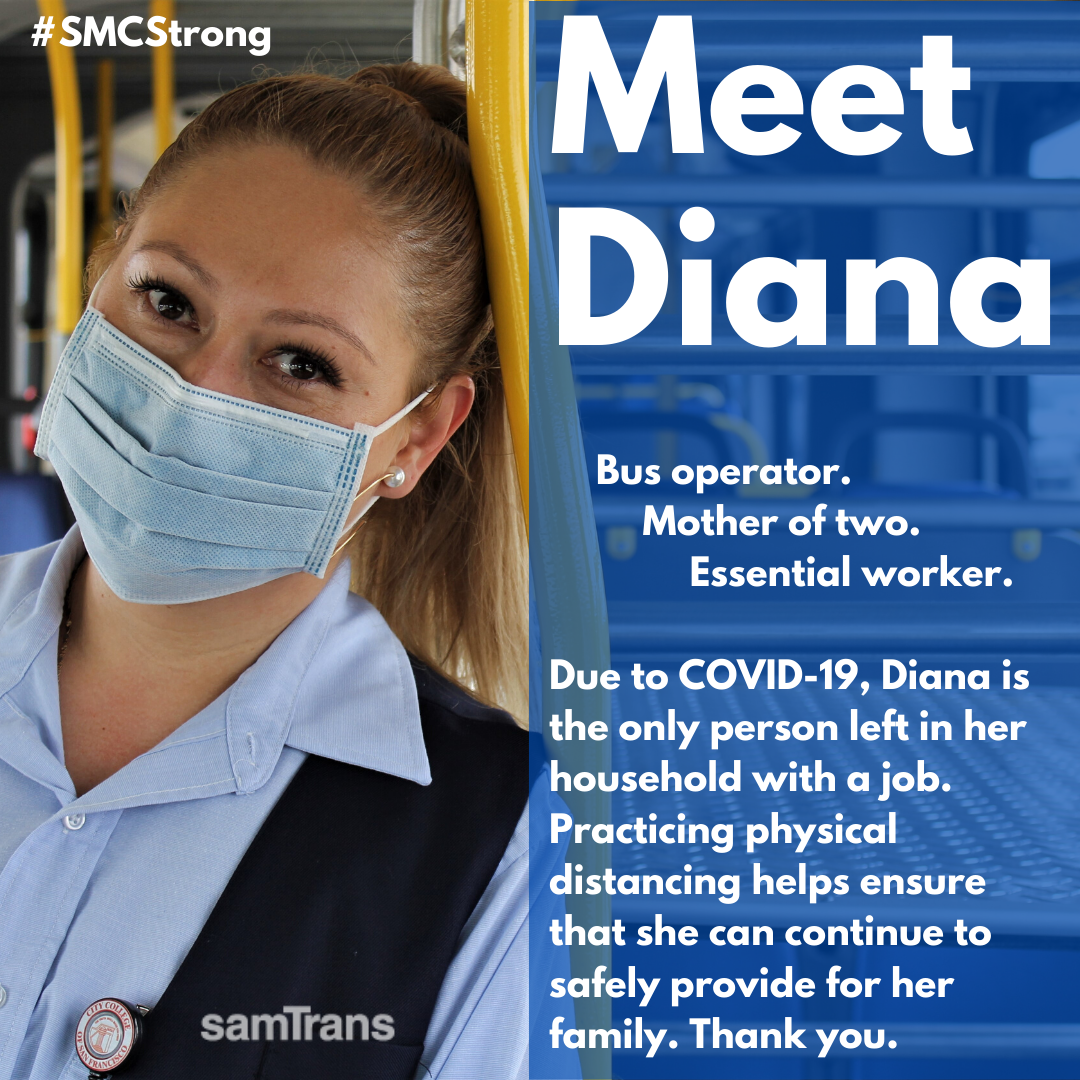
We are one transportation agency among thousands doing our best to be of service in the midst of an historic public health disaster. But SamTrans is more than its fleet of buses. We are hundreds of dedicated civil servants living and working in the communities we serve. We too feel the heartache, stress and anxiety of this pandemic. Our employees have had to adapt to working from home, many are homeschooling their kids and we are all waiting for some semblance of normalcy to return to San Mateo County.
Our job is not easy, but we know it’s crucial. We don’t know what lies on the road ahead, but if our employees’ hard work and ingenuity have proven anything, it’s that we’ll get through this bumpy ride together.
Thank you, and stay safe.
